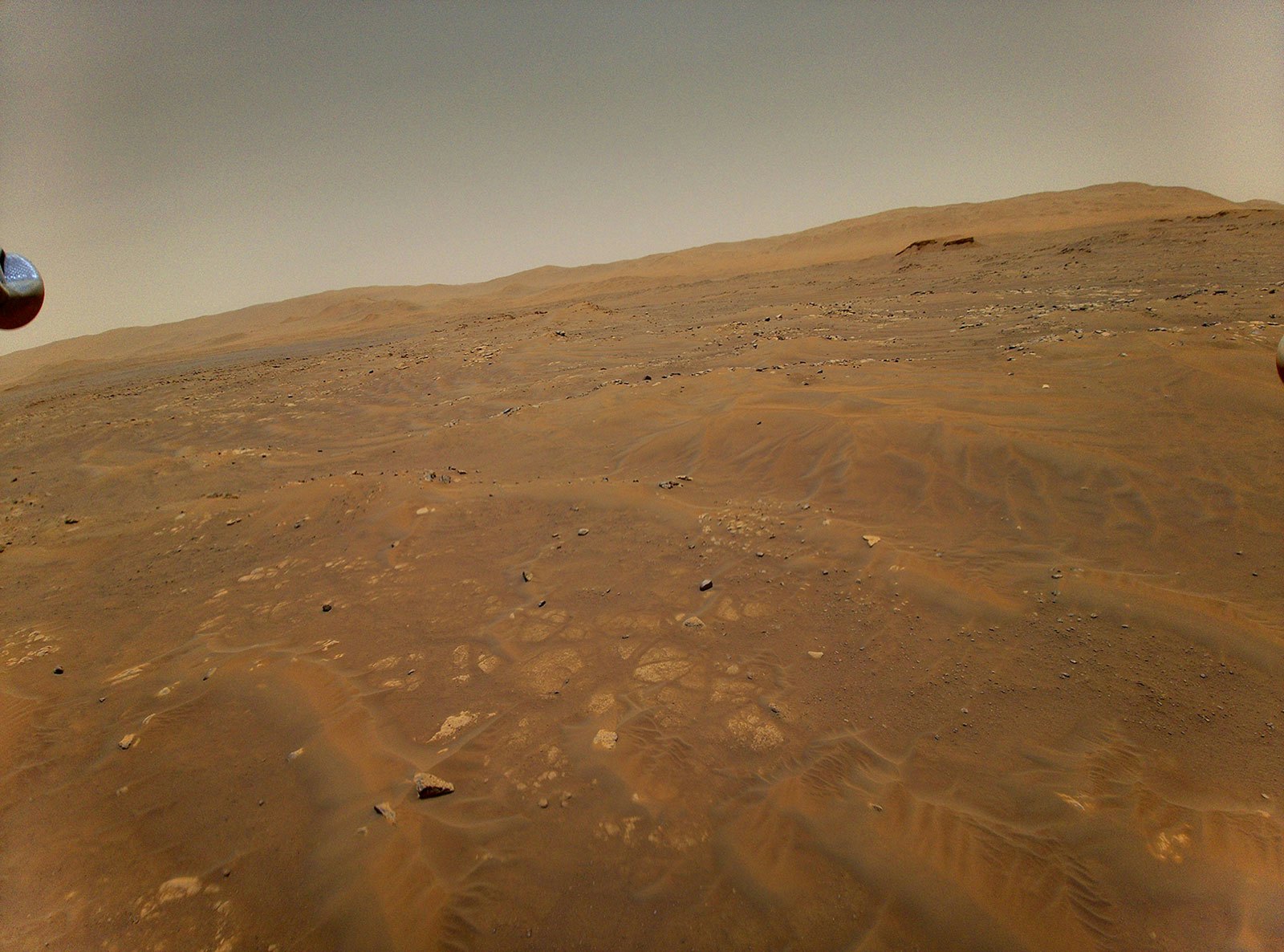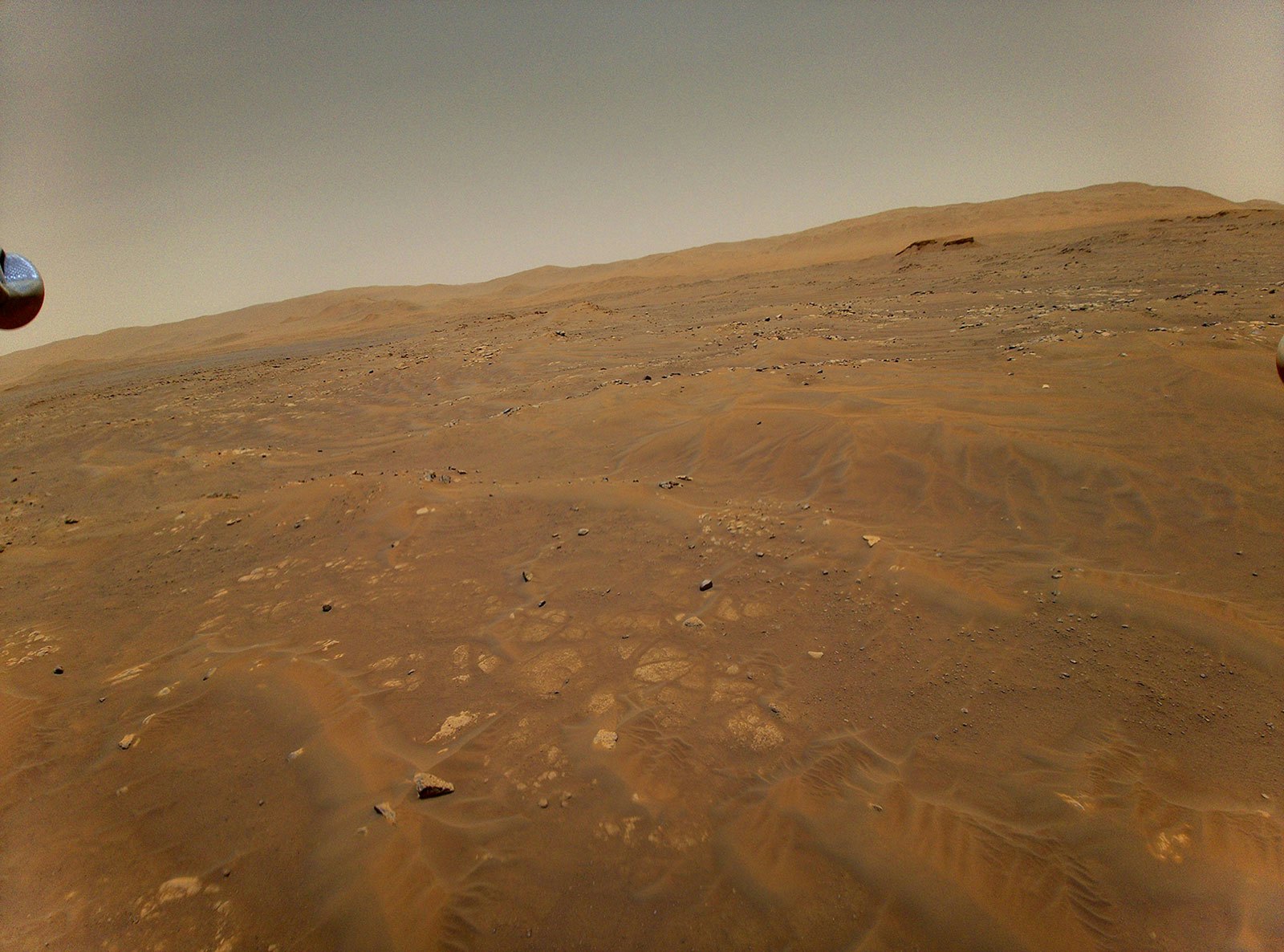
The Perseverance rover has stashed two samples of rock that could be our best shot at finding evidence of past life on Mars.
Meanwhile, the rover has already made a surprising discovery about the source of those samples, and the large rock formations it's been exploring since early 2021. Jezero Crater turns out to be a more complicated place than it looks from Martian orbit.
"These rocks... record an ancient period when impact cratering, volcanism, and water were actively shaping the surface of the planet," wrote California Institute of Technology planetary scientist Kenneth Farley and his colleagues in their paper in Science.
What's New – A huge swath of Jezero Crater's floor is made of once-waterlogged volcanic rock, according to recently-published data from the Perseverance rover. The chemical reactions between the volcanic rock and the groundwater that flowed through it could have powered subterranean life on Mars — while simultaneously preserving chemical evidence that it once existed. Perseverance has taken samples from two different rock formations, which may return to Earth on the eventual Mars Sample Return mission.
Perseverance's path so far has taken it south along the edge of a rock formation called Seitah, then around Seitah's southern tip to drive west along the edge of another rock formation called Maaz. Along the way, Perseverance has used ground-penetrating radar to map the layers of rock buried beneath the surface, while its other instruments have measured the chemical makeup of parts of Seitah and Maaz.

Scientists expected Jezero Crater's floor to be made of layers of sedimentary rocks, formed from layers of ancient mud and sand washed into Jezero back when water flowed on the surface of Mars.
But when Perseverance's instruments measured the chemical makeup of two large rock formations, and studied the size and structure of their crystal grains, it discovered that Seitah and Maaz are actually layers of volcanic rock, probably formed when a large pool of magma slowly cooled. The heaviest minerals settled at the bottom, forming Seitah's olivine and pyroxene-rich layers. Lighter minerals above those eventually formed Maaz.
The chemical fingerprint and the physical structure of the rocks Perseverance studied also revealed that sometime in the last 3 to 4 billion years, groundwater flowed around and through those layers of solidified magma, triggering chemical reactions with minerals in the rock.
"These rocks have clearly interacted with water to make carbonate, likely serpentine minerals, and to deposit salts in small cavities," Farley says.
Rocks from the Seitah formation showed traces of chemical reactions between carbonated water and iron and magnesium in the rock, and rocks from the Maaz formation contained small cavities, filled with minerals left behind when briny water evaporated away.
Why It Matters — "The fact that these rocks interacted with water is a bonus — they may record environmental conditions during which water was present on the Martian surface, and may be habitable. The latter is obviously important in the search for evidence of possible ancient Martian life," Farley says.
Deep in Earth's crust, whole populations of microbes thrive on the energy and nutrients released by the chemical reactions that happen when salty, mineral-laden water meets volcanic rock rich in iron and magnesium. Reactions, like the one that happens when salty water meets a volcanic mineral called olivine, can release energy and chemical building blocks for life. And the heat released by those reactions can even power hydrothermal systems.
That process, called serpentinization because it produces a group of minerals called serpentine, is exactly what seems to have happened to some of the rocks Perseverance sampled in and around the Seitah formation.
"Those are the ingredients that people are very excited about with regard to understanding environmental conditions that could potentially have supported life at some point after the rocks were formed," Shuster said in a statement.

Serpentinization here on Earth also produces veins of minerals called carbonate, which can preserve biomarkers like lipids or even fossil traces of microscopic organisms. And in desert environments, salts left behind by evaporating water — similar to the ones found in small cavities in some of Maaz's rocks — can also preserve evidence of microbial life.
Perseverance’s new rock samples may also tell scientists when the meteorite that formed Jezero Crater actually struck Mars, as well as when the clay and mud of the river delta began to cover the crater floor. In a lab on Earth, geologists can measure when the minerals in those rock samples crystallized — which will tell them when the magma cooled to form the rocks. That date could be the key to Jezero Crater’s whole timeline, because the magma must have cooled sometime after the crater formed but before the arrival of the river delta.
Here's the Background — Roughly 3.5 billion years ago, a river flowed into Jezero Crater, where it fed an ancient lake. Where the river met the lake, its current slowed enough to drop the rocks and dirt it carried, leaving behind a huge fan-shaped delta that's still visible in Jezero Crater today. That evidence of a watery ancient environment, potentially perfect for life, is why Perseverance's mission planners chose Jezero Crater as the rover's landing site.
But the recently-published data from Perseverance, which includes a ground-penetrating radar survey of the rock layers beneath the surface, suggest that before Jezero Crater was a lake of water, it was a lake of magma.
"The radar data and the rest of the rover instruments tells us that the crater floor is not simply filled with lake bottom sediments," University of Oslo remote sensing researcher Svein-Erik Hamran tells Inverse. "The geology and the formation of the crater floor is more complex than first expected."
Using Perseverance’s ground-penetrating radar, Hamran and his colleagues found layers of rock beneath Jezero Crater which bear a striking resemblance to layers formed by magma layers here on Earth. However, some underground structures also look like they could be part of buried layers of sediment from the delta itself. Without more precise data on the composition of those layers, says Hamran, it’s impossible to say for sure. They published their results in a paper in the journal Science Advances.
What's Next — Perseverance is now exploring the delta that formed when sediment washed into Lake Jezero from the surrounding landscape. That's considered "the main target in the search for possible Martian life," Farley says.
The spacecraft that may eventually carry Perseverance's rock collection home is still being designed, and it will be at least a decade before those samples see the inside of a lab here on Earth. But when the time comes, Perseverance will be ready; in addition to the samples the rover is carrying, it has stashed duplicates at a contingency site near Jezero Crater's delta, just in case something happens to the rover before the sample return mission can get to Mars.
Meanwhile, Farley says the next step for Perseverance is simple: "Drive on!"







